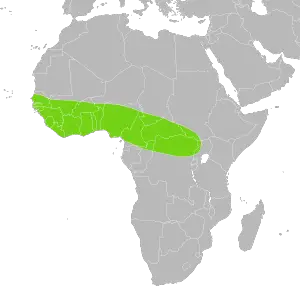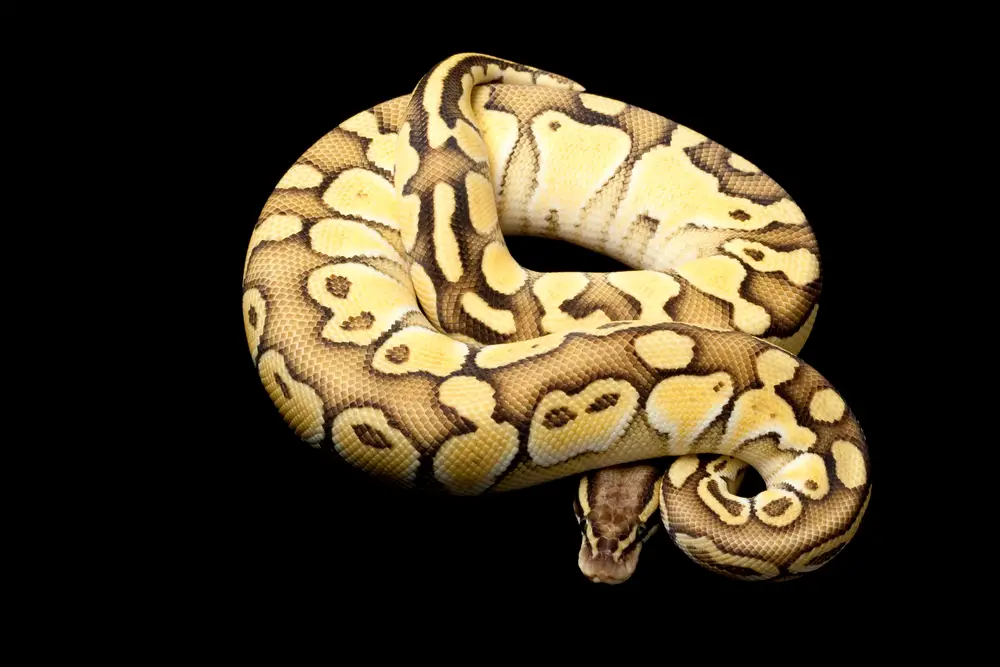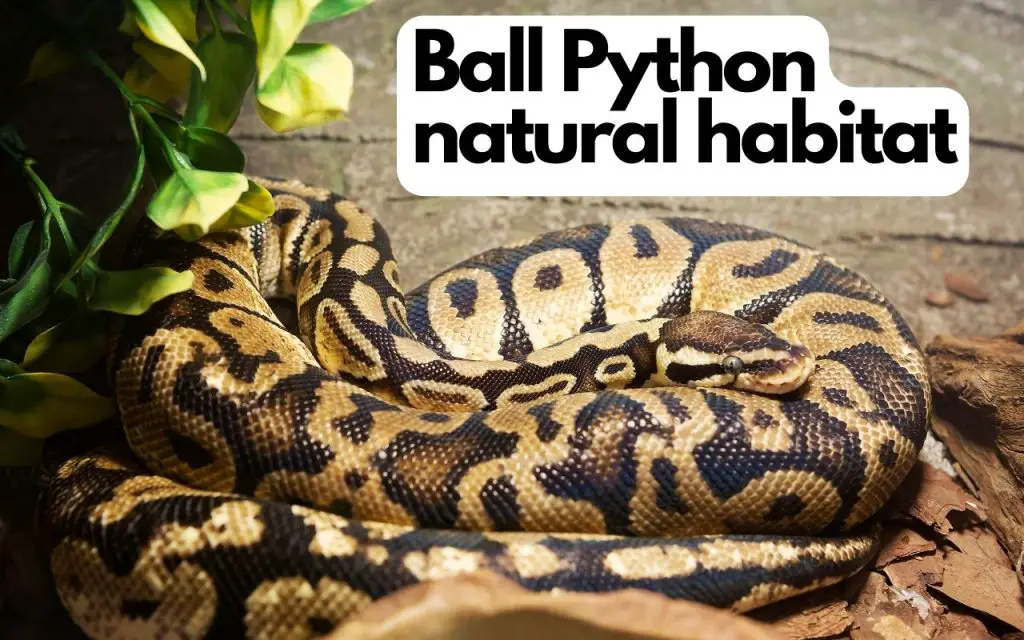As someone who’s deeply passionate about this species, having kept and bred them for years, I’ve always been intrigued by Ball Python natural habitat and how they live in the wild. It’s not just about their captivating appearance or docile behavior; understanding their natural ecosystem provides insights into their care and maintenance in captivity. Let’s dive deep into the fascinating world of ball pythons and explore their wild realms.
Ball Python Quick Facts
- Class: Reptilia
- Order: Squamata
- Suborder: Serpentes
- Genus: Python
- Species: Python regius
- Common names: Ball Python, Royal Python
- Lifespan: Up to 30 years in captivity, typically 20 years in the wild.
- Adult Size: 3 to 5 feet
- Diet: Carnivorous
- Status: Least Concern (According to IUCN) and CITES
Range in the Wild
Native to west and central Africa, ball pythons can be found spread across regions spanning from Senegal, Mali, Guinea-Bissau, Guinea, Sierra Leone, Liberia, Ivory Coast, Ghana, Benin, and Nigeria to Chad, Cameroon, Central African Republic, and Sudan.
When it comes to the Ball Pythons we keep as pets, most of their ancestors were imported from Benin, Togo, and Ghana.

Preferred Habitat
While they have a vast range, ball pythons are not the wandering kind. These snakes prefer grasslands, open forests, and savannas. They thrive in places with moderate vegetation, which provides them with adequate hiding places and a consistent food source.
One habitat that they particularly seem to enjoy is agricultural land. In areas that employ mainly traditional agriculture, Ball Pythons are a welcome guest because of how effective they are at controlling rodents.
Climate of Ball Python Natural Habitat
Being reptiles, ball pythons are poikilothermic, which means they regulate their body temperature using their surroundings. The climates they naturally reside in have specific characteristics:
- Temperature: Typically ranges between 75°F (24°C) to 95F (35C) during the day. Night temperatures can drop slightly lower.
- Rainfall: The regions they inhabit experience wet and dry seasons. The wet season provides ample water, while the dry season offers them a chance to bask in warmer temperatures. Most regions they inhabit also have a minor rainy season in addition to the main one.
- Humidity: Generally high, especially during the rainy season. This fluctuating humidity helps in shedding and maintaining their skin health. Ball Pythons seem to be uncomfortable when humidity drops below 50%.

What is Their Ecological Niche?
Ball pythons play an essential role in their ecosystem. Being carnivorous, they help control the population of their prey, which primarily consists of small mammals. This aids in maintaining the ecological balance. On the other hand, they also serve as a food source for larger predators.
In some cases, Ghanian and Togolese snake catchers have observed Ball Pythons wiping out a whole nest of rodents in one go. They achieve this by grabbing one and constricting it, whilst simultaneously pressing the others against the walls of the burrow and squashing them to death.
Ball Python Hiding Places
In the wild, ball pythons are masters of disguise and camouflage. We’ve all heard the old tale of them living in termite mounds, but the truth of the matter is that they really prefer rodent burrows. In fact, there aren’t many reputable accounts of them being found in termite mounds.
I’m not doubting that they do occasionally find their way into them, just saying rodent burrows are far and away their first choice.
Their natural hideouts include:
- Burrows: Ball pythons often utilize burrows made by other animals, particularly rodents
- Under Vegetation: They hide beneath leaves, logs, and dense shrubberies.
- Rock Crevices: Rocky terrains provide safe nooks for these snakes. As they are positively thigmotactic, they enjoy spaces that they can just barely squeeze into.
Understanding these hiding preferences helps hobbyists like me design their enclosures, replicating natural conditions for stress-free living.

Ball Python Diet in the Wild
Their diet predominantly consists of:
| Prey | Age of Ball Python |
| Small rodents | Juveniles and adults |
| Birds | Lighter adults, males, and juveniles, until they get too heavy to climb well |
| Frogs | Records do exist for juveniles, but it’s extremely rare |
| Bats | Juveniles and adults (occasionally) |
| Other mammals | Juveniles and adults (occasionally) |
What Kind of Vegetation Do Ball Pythons Encounter?
Ball pythons aren’t herbivores, but the vegetation in their habitat plays a significant role in their survival. One thing you’ll notice when you watch people catch them in the wild is that Ball Python hideouts are almost always situated in long grass or dense vegetation. This provides extra cover for them to help protect from predators.
Here’s a list of vegetation commonly found in their natural habitats:
- Tall Grasses: Provide cover and hunting grounds.
- Shrubs: Useful for hiding and seeking prey.
- Trees: Although they’re not arboreal, trees can sometimes be a refuge from predators or extreme conditions.

Ball Python Predators
As with any creature, ball pythons too have their set of predators. Some of their common threats include:
- Larger snakes (including cobras)
- Birds of prey (like eagles and hawks)
- Larger mammals (like leopards)
- Monitor lizards
Their natural coloration, which is a mix of browns and greens, helps them blend with their environment, offering some protection against these predators.
Final thoughts…
In conclusion, the natural habitat of ball pythons is a delicate balance of climate, vegetation, and ecosystem roles. For those of us who keep them in captivity, it’s a constant learning experience to replicate these conditions and ensure our scaly friends live their best lives. While they may be far from their African homes, understanding and respecting their natural ways is the best homage we can pay to these beautiful creatures.
If you’d now like a little help with housing a Ball Python, I suggest checking out my post on choosing the right enclosure.

FAQ relating to Ball Python natural habitat:
What is the best environment for a ball python?
If you keep a Ball Python in captivity, the best environment is one that provides safety, optimal temperatures, and optimal humidity. PVC enclosures, racks, and plastic tubs can achieve this is if you set them up correctly. Check out the Ball Python Care Hub on my homepage for more information!
Are ball pythons tropical or desert?
Years ago, there was a persistent myth that Ball Pythons came from arid regions. I don’t know how it started, but it isn’t true! Python regius is a tropical species with a strong preference for humid habitats. It particularly likes agricultural areas, grassland, and forest edges.
Do ball pythons like hot or cold?
Ball Pythons like relatively hot temperatures (by our standards at least). In my experience, they do extremely well when provided with a warm spot/basking area of 90-91F (32C) and a cool end temperature of around 80-81F (27C).
What do ball pythons enjoy?
I’ve lived with Ball Pythons since I was 12 and I’ve come to understand what is the one thing they enjoy most: Feeling safe. They always do better if they have a snug, sturdy hiding place or two, and cluttered enclosure. Aside from this, some of them enjoy occasionally exploring, and this is easy to provide by letting them out to explore your living room or bedroom under close supervision.

